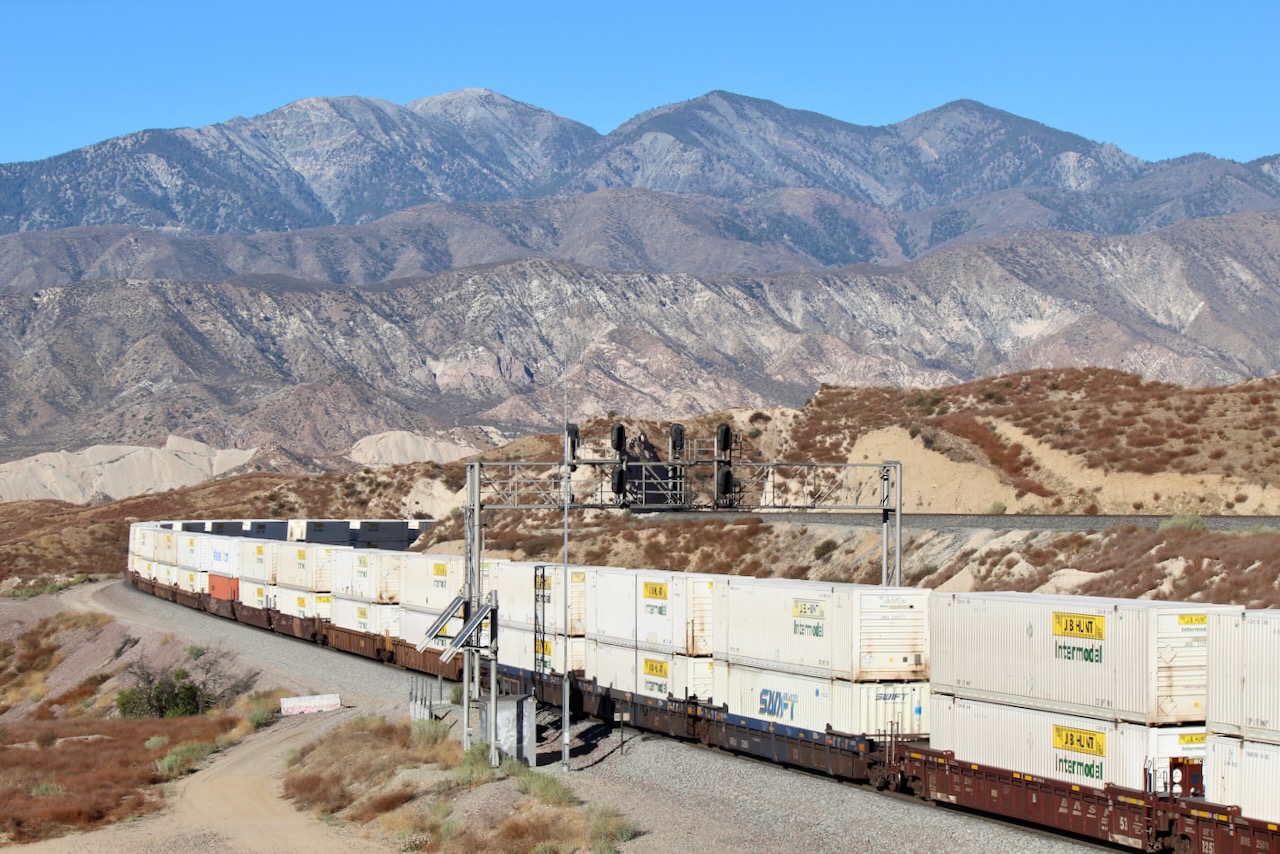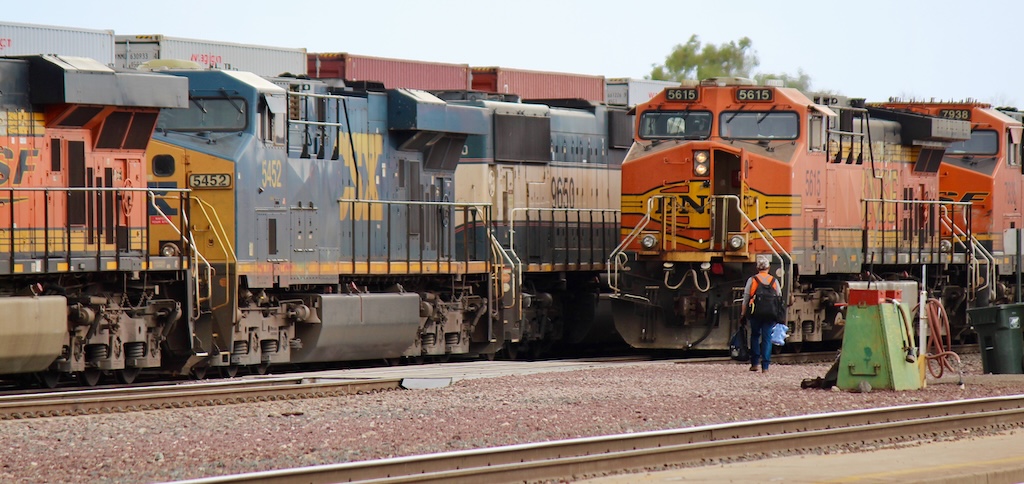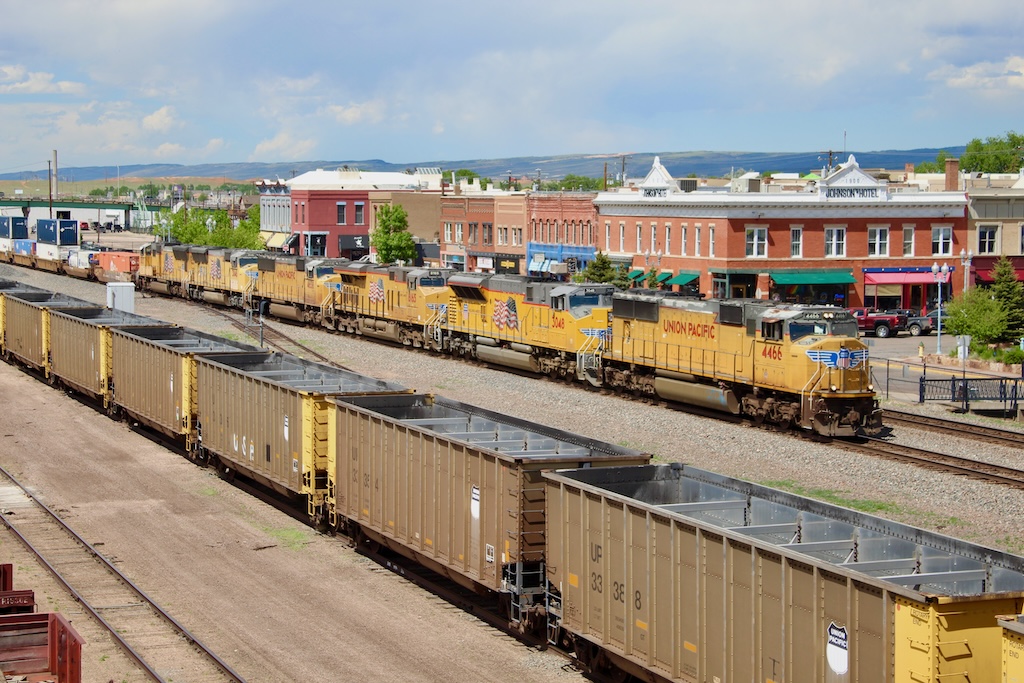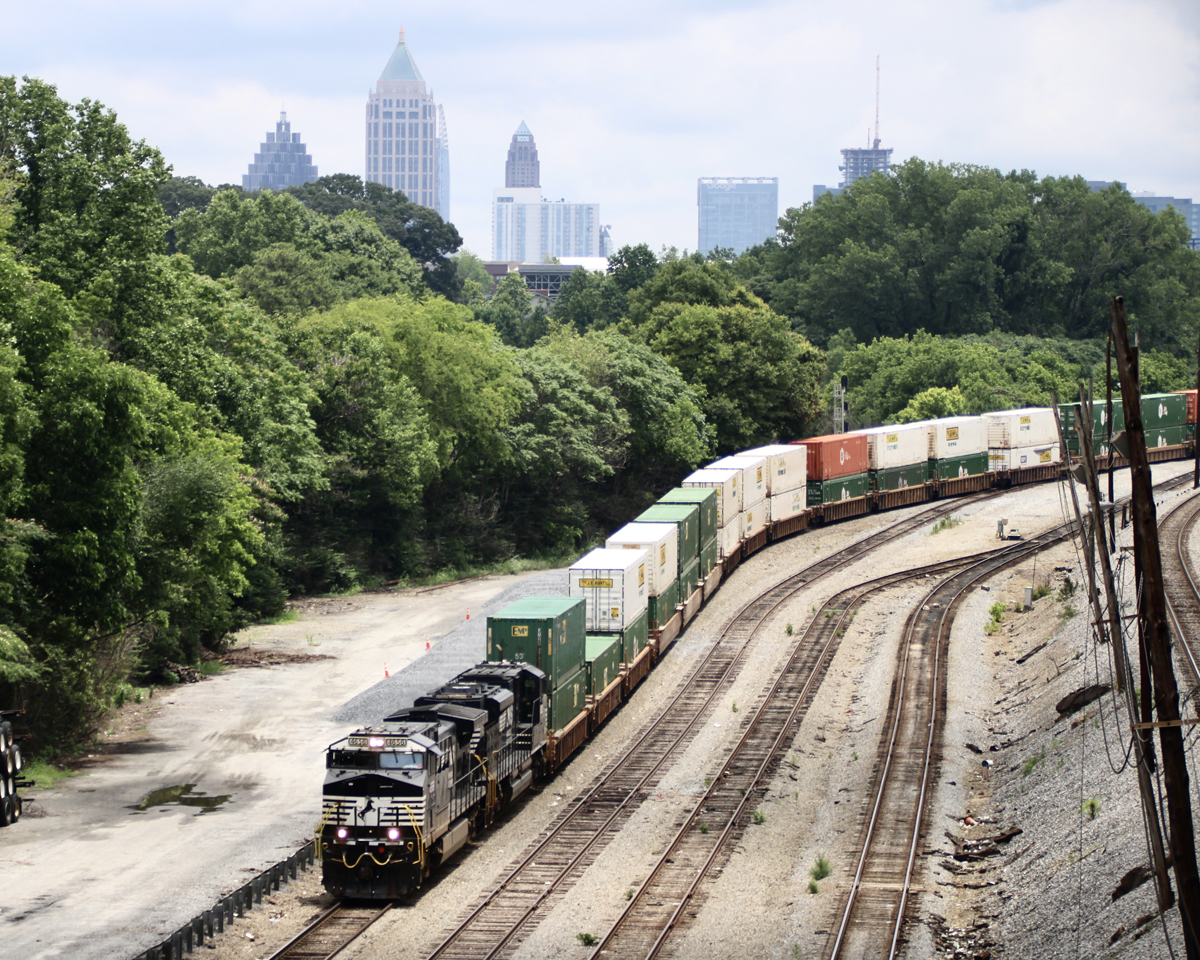
Three traffic segments have driven Class I railroad performance in 2025, according to Association of American Railroads data: intermodal, coal, and grain. Year-to-date, intermodal volume is up 5% compared to the same stretch in 2024; coal is up 6%, and grains are also up 6%.
Union Pacific is moving the most coal: In the most recent weekly data, traffic was up 38% over the same week in 2024; for the year to date, UP has moved 18% more coal carloads. CPKC’s year-to-date intermodal traffic numbers are up 11% over 2024, and Canadian National’s year-to-date grain volumes are up 17% compared to 2024.
Intermodal traffic remains vital segment. This year, Western U.S. railroads Union Pacific and BNSF have seen substantial increases in intermodal volumes. Union Pacific’s intermodal volumes is by 9% in 2025 compared to 2024, partly driven by growing consumer goods and e-commerce demand, particularly at the west coast ports. BNSF saw a similar uptick (5%), reflecting a strong recovery in retail and manufacturing sectors that heavily rely on intermodal services.
CSX and Norfolk Southern are also tapping into the intermodal growth, though their performance varies. CSX reported a marginal increase in intermodal traffic as it continues to enhance network efficiency in response to competition from trucking. Conversely, Norfolk Southern has faced a slight downturn, attributed to competitive pressures and network adjustments to improve service reliability.
The rail grain market is witnessing robust activity, largely due to an increase in U.S. corn exports. Despite tensions with China leading to reduced shipments, American exporters have successfully diversified their markets in Asia, Latin America, and the Mediterranean, contributing to a 9% increase in seaborne grain shipments compared to 2024. This has been crucial, as Chinese tariffs imposed in March have significantly reduced China’s share of U.S. grain imports from 26% to 10%. Railroad grain show a 26% rise, reflecting increased domestic grain movement. CPKC and Canadian National are particularly benefiting from this shift.
The dynamics are different for the gains in coal. The U.S. coal market, generally in decline due to environmental policies and shifting energy preferences, is experiencing a temporary surge in 2025. This resurgence is linked to heightened domestic electricity demands and export demand from Asia, particularly India and China. Union Pacific and BNSF have both reported noticeable increases in coal shipments as power plants ramp up production to meet summer electricity demands. April 2025 saw U.S. power plants receiving 28.5 million short tons of coal, up from 24.4 million the previous year, indicating a robust domestic push despite longer-term trends towards renewable energy.
Coal exports, meanwhile, saw their highest levels in six years. Gross exports reached 10 million short tons by June, primarily driven by competitive pricing and demand from steel production sectors in Asia. This export surge is benefiting eastern railroads as well, as CSX and Norfolk Southern are seeing increased coal traffic.
As Class I railroads navigate a dynamic landscape, their ability to adapt to shifting economic conditions, leverage intermodal capabilities, and manage traditional sectors like grain and coal are underpinning their performance.
— A version of this article originally appeared at FreightWaves.com.














“Conversely, Norfolk Southern has faced a slight downturn, attributed to competitive pressures and network adjustments to improve service reliability.”
To improve service reliability is just a great euphemism! Congrats to the spokesbeing for that one. I’ll let other plug in the honest meaning. (heh!)
NS seeing a decline in intermodal may be because they closed down a number of their international intermodal lanes earlier this year and cancelled plans for others. Short sighted move by the new CEO in my opinion.
These traffic figures leave a large hole in actual traffic. Does a coal train starting at say UP transferring to NS count as one train or 2 trains? IMO a better measurement would be net loaded car miles. That way empty IM containers would not count as revenue traffic. Maybe empty miles should be listed in a separate column. Have no idea how empty miles are accounted for at present.